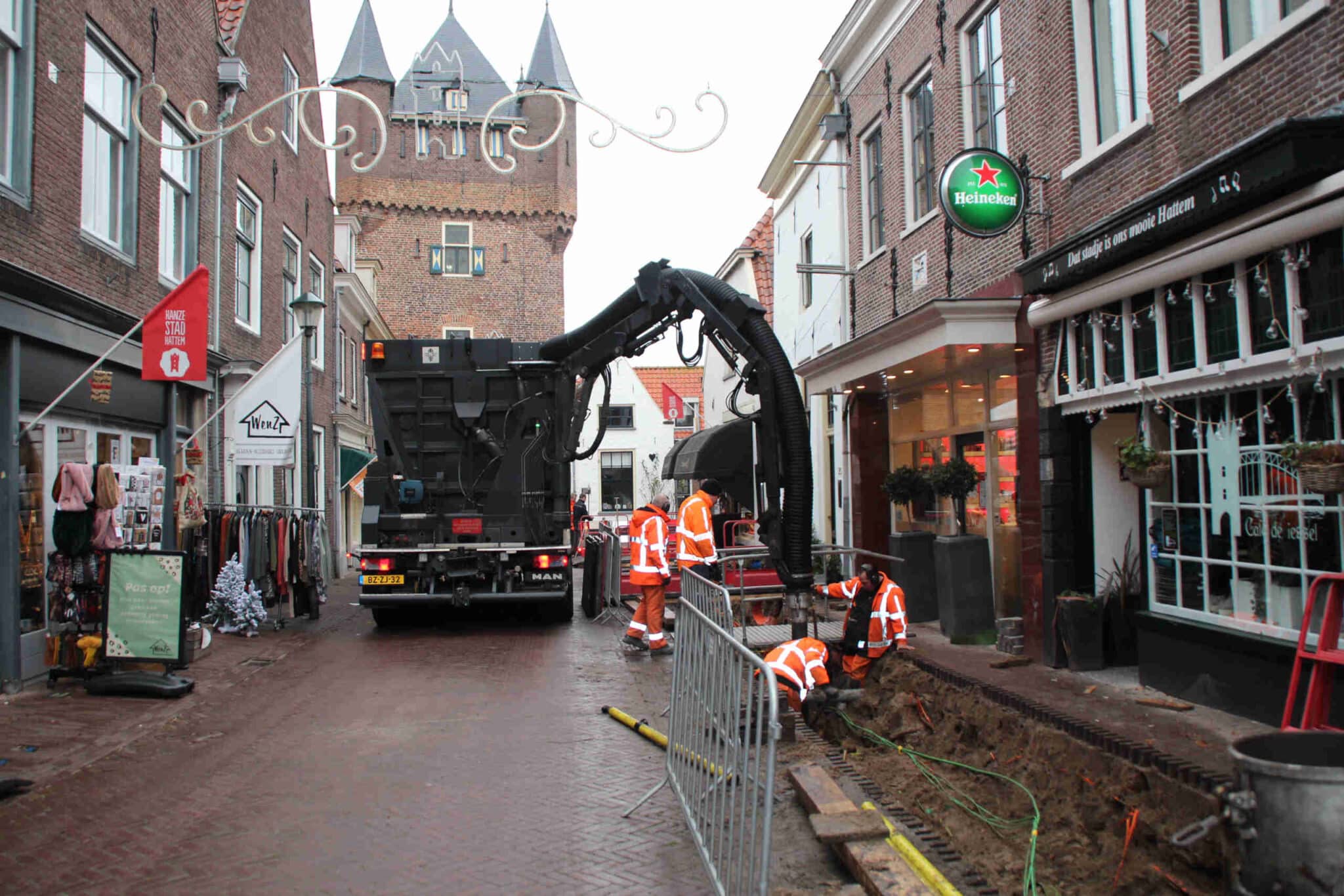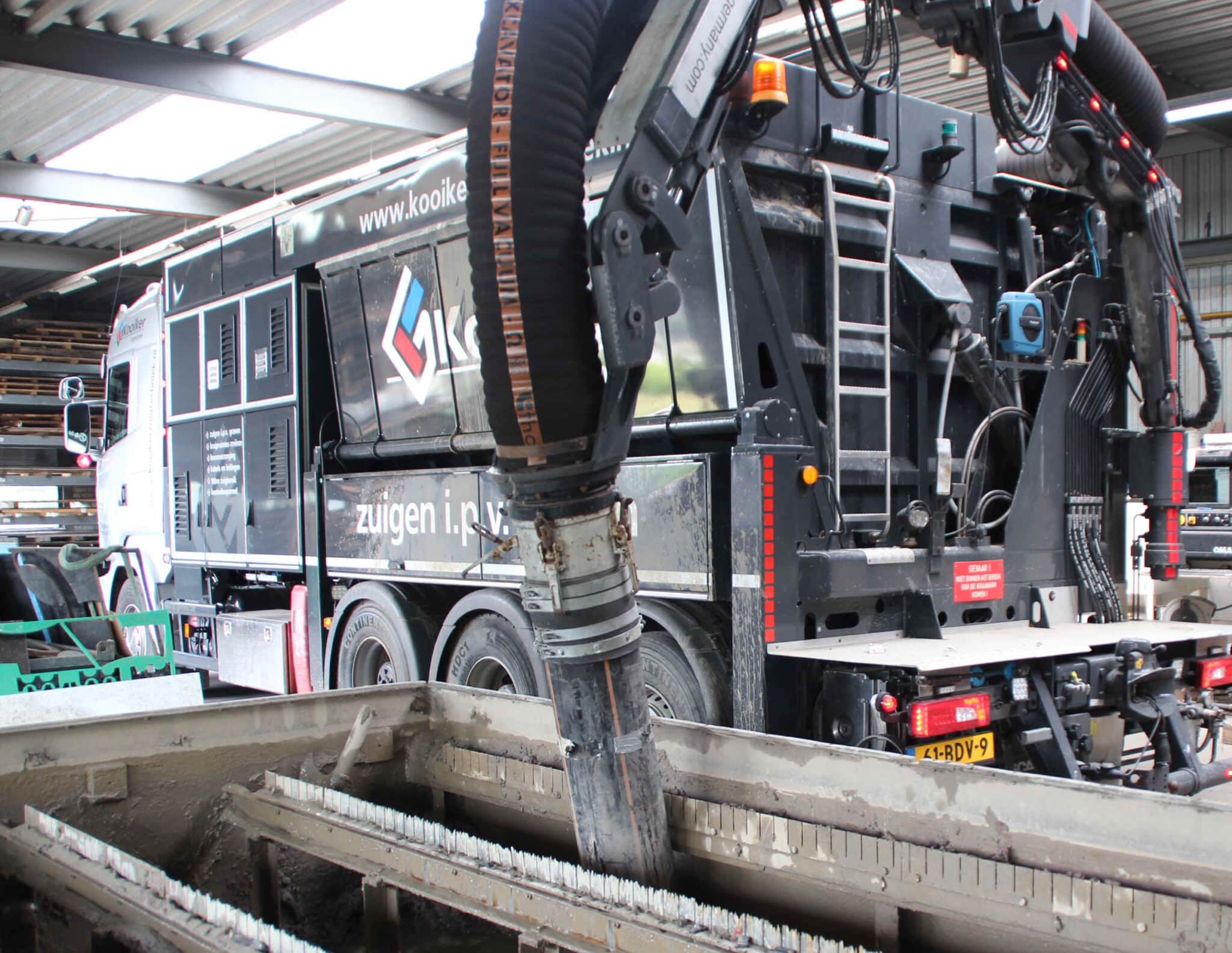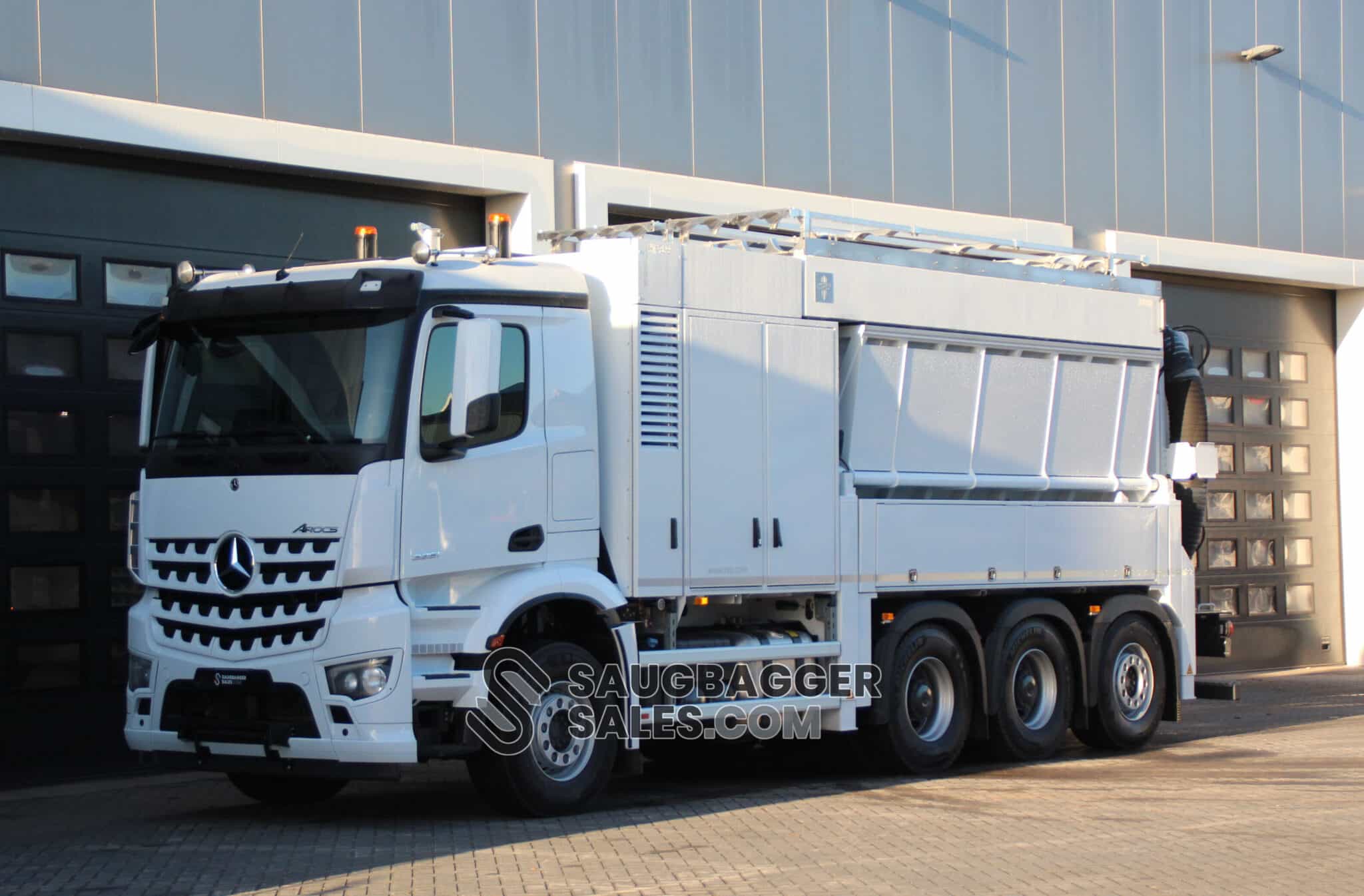Advantages of hydro-excavation
Using a soil or hydro excavator offers many advantages over traditional excavators. One of the biggest advantages of suction excavators is their ability to operate in narrow and hard-to-reach areas. In addition, you can dig very precisely with a soil excavator. This improves safety when excavating cables, pipes and tree roots. Hydro-excavation is therefore increasing in popularity.
The advanced soil excavator can be controlled remotely. The operator does not have to continuously move the truck, but can control the hydro-excavation work radiographically and keep a close eye on it. Also, when using a soil excavator, only one vehicle is needed, as the raw materials are stored directly in the container. Hydro excavation with an excavator generally also requires a sand truck to move the raw materials over a distance. With a sand excavator, you can vacuum up to 150 meters of soil, sand and other materials and remove them directly.


Hydro-excavation only for vacuuming soil and sand?
The soil excavator can be used not only for vacuuming soil and sand, but also for many other jobs such as:
- Industrial cleaning (including industrial halls, weighbridges, biodigesters and biofilters, water cutting tables);
- Emptying wells and storage tanks;
- Cleaning of pavements;
- Removal of roof gravel.
Hydro-excavation truck rental from Saugbaggersales.com
Are you orientating on renting a soil excavator? Then we will gladly brainstorm with you. Saugbaggersales.com rents and sells both suction excavators and vacuum excavators. We will provide you with a suitable quote within 24 hours and guarantee immediate availability of the vacuum excavator. Visit our page on hiring suction excavators, or contact us if you would like professional advice.

Sales & Aftersales
Which soil excavator should you go for?
Not every soil excavator is the same. Specifications differ. One project requires more suction and different specifications than another. Several variables determine which type of soil excavator is most suitable for the project. These variables include the depth to be vacuumed, the height to be vacuumed and the type of material to be vacuumed. We outline below three scenarios for your possible upcoming hydro-excavation project.

Common applications within hydro-excavation technology
Suction excavators are used in various ways all over the world, including in the UK. In the UK, contractors most commonly use vacuum trucks or hire soil vacuums for the following jobs:
- Crawl space or basement excavation;
- Excavating cables and pipes;
- Digging trial trenches;
- Removing tree roots;
- Removing roof gravel;
- Removing insulation material from a crawl space.
Excavating cables and pipes
The traditional way of digging with an excavator regularly causes damage when excavating cables and pipes. The consequential damage to cable or pipe breakage is usually large. When excavating cables and pipes with a vacuum excavator, the risk of excavation damage is minimal.
Digging trial trenches
Before any hydro excavation work takes place, it is good to know where there may be cables and pipes underground. To map these out, it is common to dig trial trenches. Nowadays, it is common to use excavators to do this. Suction excavators ensure safe digging and less excavation damage.
Removing tree roots
Digging in locations where there are many trees requires caution. Trees can die as soon as the tree roots are damaged. Vacuuming tree roots makes it possible to excavate cables and pipes without damaging them. The hydro excavation technique is regularly used for this.
Removing roof gravel
Removing gravel from roofs can be done in multiple ways. Vacuuming roof gravel is by far the fastest and easiest way. By using long suction hoses, it’s possible to suck up the gravel over long distances and at height, and dispose of it directly.
Removing insulation material from a crawl space
Many crawl spaces have bottom insulation through shells, EPS pearls or insulation chips. In case of sewer leaks, for example, the bottom insulation makes it difficult to perform repair work. To remove the material properly, vacuuming is the best option. The material can be stored and, where necessary, reinstated at a later stage.

Sales & Aftersales

